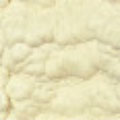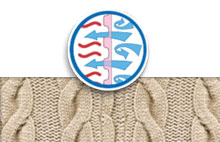SPRAY FOAM VS TRADITIONAL
Contact us today for a FREE QUOTE!
HOMEOWNER: DIFFERENCE BETWEEN SPRAY FOAM AND FIBERGLASS
Spray Foam
Fiberglass Insulation
Spray Foam Stops Air Leakage
Spray foam insulation is like a warm windbreaker jacket — it stops the cold air from passing through. This keeps your house at a comfortable temperature year round. It also lowers your energy bill by 20-50%! Spray foam insulation keeps you comfortable while saving you money.
Fiberglass and cellulose insulation are like a wool sweater – if there’s any breeze, it doesn’t keep you warm. Even if they’re very thick to give an extremely high R-value, they’ll still let air leak out of your home and increase your energy bill.
Spray Foam Insulation for Homes is a Modern Material
Spray foam insulation is a modern material that’s been used for over 25 years.
Fiberglass is an old technology, and cellulose is little more than shredded newspaper. So modern types of insulation are becoming more popular.
Spray Foam Fills Gaps
Spray foam insulation expands up to 100 times to fill gaps — ensuring maximum insulation. This prevents outside air from entering your home and saves you money on your energy bill.
Fiberglass and cellulose are extremely difficult to install perfectly — the spaces that are left add up to the size of a basketball in the average home — leaking enough air to fill two blimps each day!
Spray Foam Insulation Protects Your Home From Water
Many open cell spray foam (such as Icynene LD-C-50) drains water rather than holding it, and most closed cell spray foam doesn’t let it in at all.
Cellulose is made from shredded newspaper, and drinks up water. Fiberglass batts and cellulose don’t repel water — the water stays in place and may damage your home as well as reduce how well the insulation works. This is one of the leading contributors to mold development — and it also decreases R-values, meaning you spend more on energy.
Spray on Foam Stays in Place
Spray foam stays in place – it doesn’t settle or sag, vertically or horizontally. It moves with the house as it settles. Spray foam insulation is completely solid when it sets, doesn’t produce any dust, and doesn’t let dust or other pollutants pass through to your home.
Fiberglass and cellulose settle and sag over time, leaving gaps that compromise insulation. Fiberglass and cellulose can be dusty and allow dust and other pollutants to enter the building.
Spray Foam is Healthier
Many spray foams (such as Icynene LD-C-50) don’t contain formaldehyde, HCFCs, HFAs, or HFCs, and doesn’t give off harmful emissions once installed.
Most fiberglass contains formaldehyde, and may emit formaldehyde fumes into your home.
Spray Foam Doesn’t Attract Pests
Many spray foams do not provide a source of food for rodents, termites, or other nasty critters. As a home insulation, spray foam also doesn’t make for good nests.
Fiberglass and cellulose can be torn apart by pests, and some even use them for nesting.
Spray Foam Isn’t Easily Damaged
Spray foams harden to a dense material that isn’t easily damaged.
Exposed fiberglass and cellulose are easily damaged – insulation in areas such as basements and attics may be compromised by cats, children, moving boxes around, and other general usage.
GO GREEN. GET APEX!
Call us at
888-581-1783













